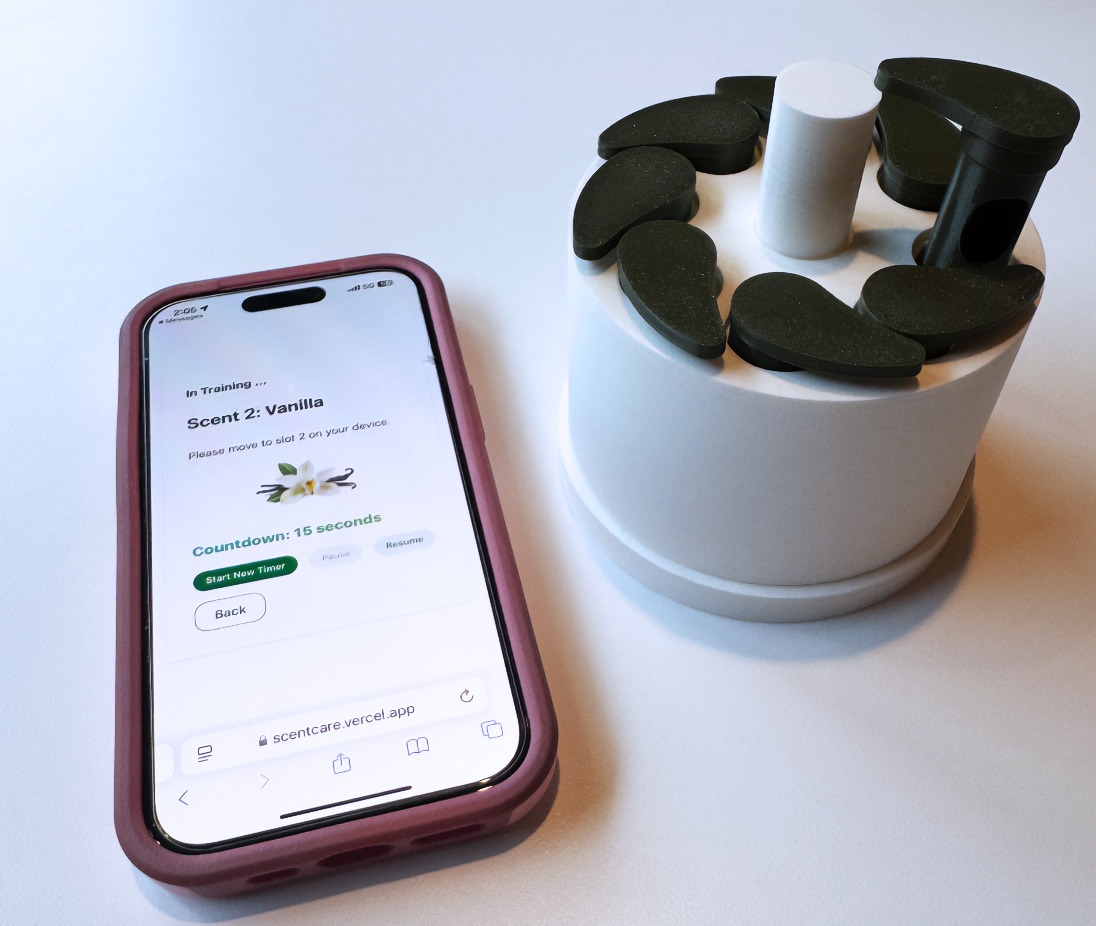Whether it’s the aroma of the salty ocean, freshly cut grass, or a pie baking in the oven, smells have the power to improve our mood, trigger memories, and even alert us to potential danger. In fact, our sense of smell is so vital that its loss can be a strong clue that something has gone wrong in the body.
An invention from Johns Hopkins biomedical engineering students could help clinicians detect and treat smell dysfunction earlier. Called ScentCare, the system comprises two components: a cylinder case containing scented inhaler cartridges, and a companion smartphone app that guides users through smell testing and retraining exercises. This straightforward approach requires no expensive equipment or fine motor movements– just a simple sniffing device and a smartphone – making it potentially more accessible than other smell tests, especially for older adults.
“We focused on building something simple that does both testing and retraining with just one device, because there is no device that does both on the market yet,” said ScentCare team member Mili Ramani, a fourth-year biomedical engineering major. “The novelty is that this is much less cluttered and more standardized.”


